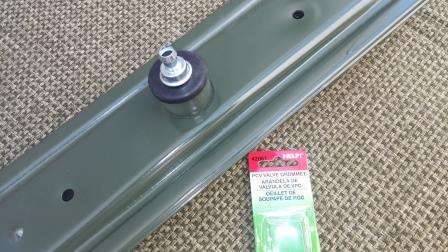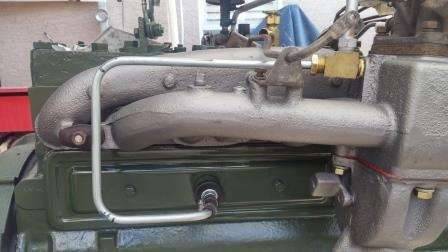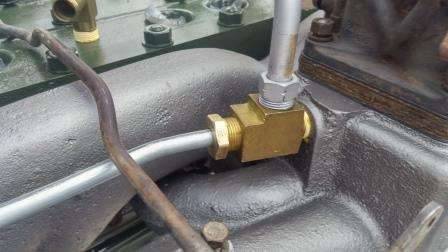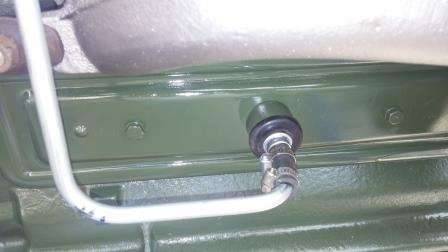|
Re: How to add a PCV Valve to a 1949 Packard
|
||||
|---|---|---|---|---|
|
Home away from home
|
Very interesting indeed. I curious as to other changes you may have needed to make in order to not rob too much vacuum from the engine manifold.
- Did you simply block the existing draft tube hole? - Did you add any restriction to the Oil Filler Cap? - Are you able to report on power & economy effects? Both of my antiques suffer from the undercar coating as well and to date, the only fix I've come up with is to extend the draft tube a bit lower. Pat
Posted on: 2015/9/22 14:34
|
|||
|
||||
|
Re: How to add a PCV Valve to a 1949 Packard
|
||||
|---|---|---|---|---|
|
Home away from home

|
- other changes you may have needed to make in order to not rob too much vacuum from the engine manifold.
The PCV valve robs almost no vacuum from the intake because it is a calibrated hole with a spring loaded piston. The amount of vacuum leak is negligible. Only needed change is a slight idle enrichment adjustment. - Did you simply block the existing draft tube hole? Removed the draft tube and stuck a rubber grommet in it's place. - Did you add any restriction to the Oil Filler Cap? No. It already has a mesh filter so all I did was clean it in the solvent tank and squirt some oil in it and let the oil flow through the mesh. - Are you able to report on power & economy effects? Nope...the previous engine was essentially a 5.5 cylinder but now with all new exhaust valves it REALLY purs like a kitten. At first I was a little concerned because it seemed to run rough however with the help from this forum I was able to hot adjust the valves and after a bit of wear in it REALLY runs smooth. Power wise she does not break any speed records however the new paint on the engine and the buffed out exterior paint job I am confident I have shaved off a couple of tenths from my 100 foot and quarter mile ETs. Additionally less sludge on the bottom of the car will increase gas mileage a bit. WIN/WIN/WIN if you ask me!!! Bill
Posted on: 2015/9/22 15:52
|
|||
|
Bill,
Dedicated to keeping the man who owns one on the road!!! |
||||
|
||||
|
Re: How to add a PCV Valve to a 1949 Packard
|
||||
|---|---|---|---|---|
|
Home away from home
|
How did you decide which PVC valve to use? Did you need to add a baffle where the valve is mounted in the valve lifter cover to keep from sucking oil.
John
Posted on: 2015/9/22 19:34
|
|||
|
||||
|
Re: How to add a PCV Valve to a 1949 Packard
|
||||
|---|---|---|---|---|
|
Home away from home
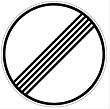
|
Nice modification. The valve cover already has a baffle in front of that hole where the road draft tube attached, so no other baffle should be needed. I guess as long as the pcv has a spring in it, and is not just relying on gravity to open/close, it should be good to go. Having a closed crankcase also keeps your oil cleaner a little bit longer. Don't know if that really makes much difference here, but shouldn't hurt. I also think as long as you were able to get your idle tuned well, I don't see anything harmfull with this modification. Since the PCV should only open when the throttle is closed and manifold vac is high, Idle is the place where performance would be most affected. Tip in and light throttle could also be a little lean, but if you say it runs well, I'll believe you.
Since the PCV doesn't suck when you are hard on the throttle, you could potentially start leaking oil if you are doing long dyno pulls or something, but I gues the packard won't be seeing that kind of service. Anyway, I hope you don't get any kind of oil leaks. I would consider doing such a modification "when I'm done with everything else" Thanks for shareing!
Posted on: 2015/9/23 5:35
|
|||
|
1953 Clipper Delux Club Sedan, 1953 Caribbean, 1969 912, 1990 Miata
|
||||
|
||||
|
Re: How to add a PCV Valve to a 1949 Packard
|
||||
|---|---|---|---|---|
|
Home away from home

|
Yes...the aft valve cover already has a baffle to keep the oil from venting out of the road draft breather.
The oil fill tube cap has a wire mesh filter that in the original system allowed air to blow in or out. The cap has a groove so that the cap can only be installed in one direction and that was with the opening facing forward so the radiator fan would create a slight positive pressure to prevent blow by from entering the engine compartment. The old engine had so much blow by that the engine compartment was also greasy mess near the oil fill cap. I found a PCV valve that has a spring loaded piston in it (some are designed for gravity so don't get this type because on the Packard it needs to be installed horizontal) and this spring allows the piston to create a very small vacuum leak at idle and other high engine vacuum conditions (coasting). At wide open throttle the vacuum leak is still there however very slight. There was zero problems in installing this system...a slight carb adjustment was all that was needed. Bill
Posted on: 2015/9/23 11:52
|
|||
|
Bill,
Dedicated to keeping the man who owns one on the road!!! |
||||
|
||||
|
Re: How to add a PCV Valve to a 1949 Packard
|
||||
|---|---|---|---|---|
|
Home away from home
|
At the T going into the manifold, what is the vertical line/where does it go?
Posted on: 2015/9/23 12:12
|
|||
|
||||
|
Re: How to add a PCV Valve to a 1949 Packard
|
||||
|---|---|---|---|---|
|
Home away from home
|
Quote:
That's the vacuum supply for an Electromatic clutch
Posted on: 2015/9/23 12:58
|
|||
|
||||
|
Re: How to add a PCV Valve to a 1949 Packard
|
||||
|---|---|---|---|---|
|
Home away from home

|
The vertical pipe is the pipe that goes to the electromatic clutch.
Posted on: 2015/10/18 16:50
|
|||
|
Bill,
Dedicated to keeping the man who owns one on the road!!! |
||||
|
||||
|
Re: How to add a PCV Valve to a 1949 Packard
|
||||
|---|---|---|---|---|
|
Home away from home
|
First of all, thanks to Packard 1948 for sharing his PCV installation on a 356 engine.
Intrigued by his installation, I decided to investigate and see what kind of results would be with PVC on my 115C's 237 six. I bought a valve per Packard 1948. I made a test connection to the intake manifold fitting using the valve and some 3/8" fuel hose. I did not connect the other end with the PCV falve to the draft tube fitting. I started the engine and ran it until warm. It was obvious the valve was functioning. I adjusted the idle mixture and speed screws on the carburetor to get the smoothest idle. The engine would idle down, but it was not as smooth running as it was without the PCV valve. While the idle was acceptable, I began to think that this PCV would be a vacuum leak throughout the RPM and load range. This bothered me as in order to overcome the lean mixture above idle would mean re-calibrating and re-jetting the carburetor. While the PCV may work well at burning crankcase fumes, the lean fuel mixture would probably cause problems. We know that a lean mixture can lead to poor performance, higher operating temperatures, and if bad enough burned valves. I decided not to go forward with the PCV because of the leaned-out mixture and its effect on performance and wear. Another option to positive crankcase ventilation would be to run a line from the draft tube connection to the air cleaner. Some sort of anti-backfire valve would need to be fitted in order to eliminate engine damage if the line is connected to the carburetor side of the filter element (maybe a PCV valve?). A valve would not be necessary if the line is connected to the outside of the filter element. However, with this connection crankcase fumes will contaminate the filter and it will require more frequent service. This low vacuum draw might be enough to purge the crankcase. This method was used on some vehicles in the past. This set up should not affect carburetor settings. This was my experience, others may have different results. (o{}o)
Posted on: 2015/11/14 12:13
|
|||
|
We move toward
And make happen What occupies our mind... (W. Scherer) |
||||
|
||||

 (25.62 KB)
(25.62 KB)